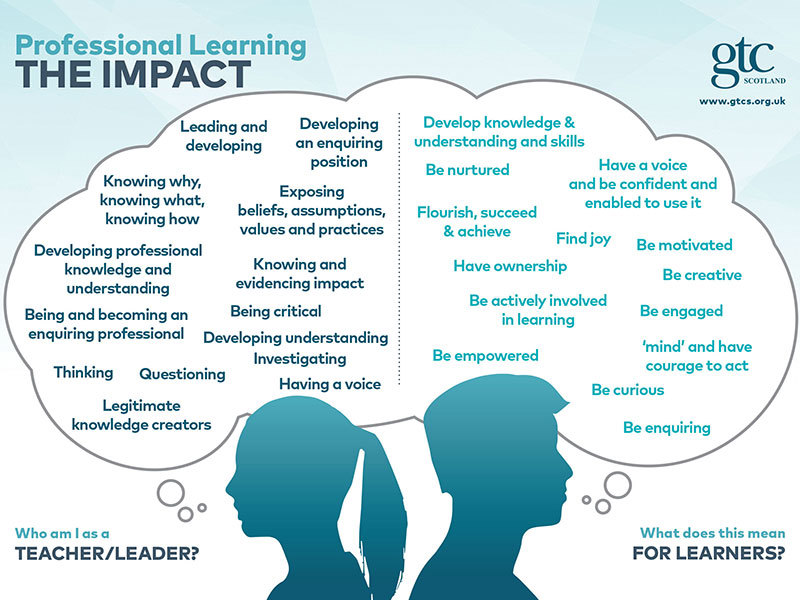Practitioner Enquiry in East Dunbartonshire Council – An Introductory Guide
How to use this self-evaluation approach to improve practice?

The guidance details a step by step process in utilising Practitioner enquiry and asks the reader to consider why they should engage in this approach, explores how it works and provides opportunity to find out more information.
Practitioner enquiry is any form of evaluation which includes the following steps:
- identify an issue to be addressed
- look at other resources and/or research literature to identify possible reasons and solutions
- identify and implement a strategy to attempt to improve the issue
- evaluate the changes made.
The GTCS highlights key reasons why Practitioner enquiry is becoming a widely accepted and popular form of teacher learning and development within Scotland:
- To empower teachers and encourage them to challenge and transform education
- To provide a way for teachers to monitor and develop their own practice
-
To investigate new strategies and initiatives
- To increase their knowledge of teaching and learning thus enabling them to make more professional and autonomous judgements and to enhance their self-esteem and professional identity.
Downloads
PDF file: Practitioner Enquiry in East Dunbartonshire Council (1.4 MB)
PowerPoint presentation: Attainment, Achievement and Equity for All (1.5 MB)
Self-evaluation approach
This is one council’s approach to introducing Professional enquiry to their teaching workforce. It considers the following key aspects:
- Practitioner enquiry is situation specific: it enables you to examine your own situation and develop your understanding of your context
- It is a participatory process and allows for input from all those involved.
- It is collaborative. You work with colleagues and other participants to answer your research question.
- It allows for an on-going process of self‐evaluation where you appraise yourself and your own performance.
It assumes that you already have a great deal of professional knowledge and can continue to develop this knowledge and improve your practice.
Explore this approach
Step 1: Identify the issue or area of change
- Think of an issue or aspect you might want to change (individual learner, group, class, school?)
- What might be causing this issue? How do you know?
- What question do you want to ask?
- For example: Why do the children in my class …?
- Develop the question into a possible intervention or change?
- For example: What happens if I …?
- What are some potential solutions?
Step 2: Identify possible solutions
- Read – online, books, journals, summaries, abstracts
- Review – what do your colleagues think?
- Reflect – think about what’s happening in your class: when, what, who, why?
- Research – are you clear about the question you want to answer?
- What ideas are you having about how you might evidence change?
Step 3: Introduce new practice or change
- How will you tackle it?
- How will you measure your results?
- What’s the plan?
- Make changes or try out your idea
- Who have I discussed this with - critical friend/peer/management?
Step 4: Evaluate what worked
- Did you manage to impact your desired outcome in any way?
- In what ways have your learners changed?
- What worked and why? What didn’t work and why?
- How will you do things differently?
- How well did your enquiry planning work out?
- How useful were your methods for gathering evidence?
- Did your forms of evidence let you see what you wanted to see?
- What have you learned yourself?
